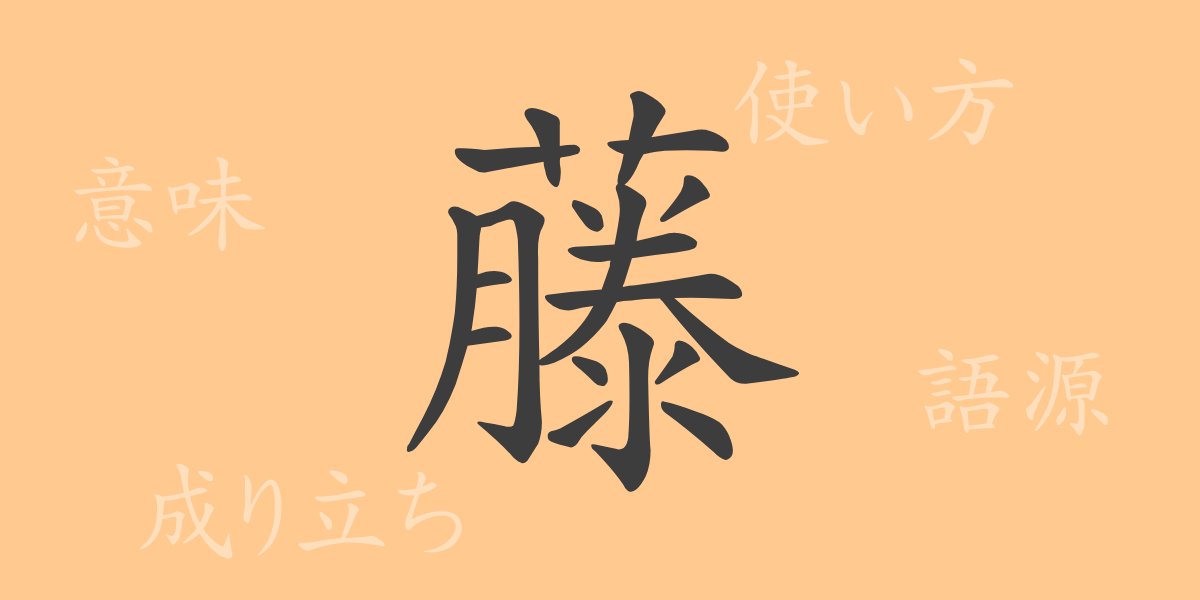Accompanying the breath of spring, the wisteria (ふじ) blossoms enhance the Japanese landscape with their graceful forms and fragrances, captivating many. However, the allure of wisteria extends beyond its beautiful flowers, as the meanings and history embedded in the character ‘藤’ hold a significant place in Japanese culture. This article delves into the Kanji ‘藤’, exploring its origins, meanings, usage, readings, stroke count, and the radicals, along with idioms and proverbs involving ‘藤’, revealing its rich world.
Origins of ‘藤 (とう)’
The character ‘藤’ originated from ancient China, combining the grass radical, which signifies plants, with the character ‘同’, representing sameness. This symbolizes how wisteria vines spread across the ground uniformly. Initially depicting a container for beans, it evolved to symbolize the plant itself, linking it with various cultural elements over time.
Meaning and Usage of ‘藤 (とう)’
Directly, ‘藤’ refers to plants of the wisteria family, but it has also come to symbolize beauty and elegance. In Japan, many clans historically adopted ‘Fujiwara (ふじわら)’ as their surname, using wisteria in their family crests, hence associating ‘藤’ with nobility and formality.
Readings, Stroke Count, and Radical of ‘藤 (とう)’
The Kanji ‘藤’ is read as ‘トウ’ (Tou) in On’yomi and ‘ふじ’ (Fuji) in Kun’yomi. It consists of 18 strokes. The radical is ‘艸 (くさかんむり)’, commonly found in characters related to plants, reflecting the spreading nature of wisteria vines.
- Reading: On’yomi ‘トウ’, Kun’yomi ‘ふじ’
- Stroke Count: 18 strokes
- Radical: 艸 (くさかんむり)
Idioms, Phrases, and Proverbs Using ‘藤 (とう)’
Idioms and proverbs involving ‘藤’ reflect its historical and cultural significance, including its association with the Fujiwara clan. For example, ‘藤色 (ふじいろ)’ refers to the lovely purple color of wisteria flowers. ‘藤三郎 (ふじさぶろう)’ was a common name during the Heian period, originating from the Fujiwara clan. The proverb ‘藤の花は三度散る’ illustrates the repetitive nature of certain events, akin to how wisteria blossoms fall multiple times.
Conclusion on ‘藤 (とう)’
The Kanji ‘藤’, from its beautiful flowers to its cultural and historical depths, encompasses various meanings. Like the wisteria heralding spring, this character moves the hearts of the Japanese people. Through exploring ‘藤’, we have touched upon its profound allure and background. Imagine contemplating its history and culture under a wisteria trellis, surrounded by its subtle fragrance, ushered by the spring breeze.

























